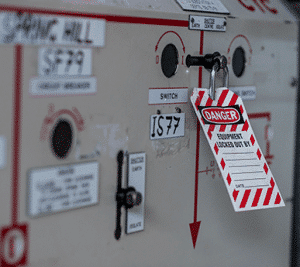Getting My Roar Solutions To Work
Getting My Roar Solutions To Work
Blog Article
How Roar Solutions can Save You Time, Stress, and Money.
Table of ContentsRoar Solutions Fundamentals ExplainedThe Basic Principles Of Roar Solutions What Does Roar Solutions Mean?
In order to safeguard installments from a possible explosion a technique of evaluating and classifying a potentially dangerous location is required. The function of this is to ensure the appropriate choice and installation of equipment to ultimately prevent an explosion and to make certain security of life.
(https://www.reverbnation.com/roarsolutions)
No devices ought to be mounted where the surface temperature level of the devices is higher than the ignition temperature of the provided risk. Below are some typical dirt harmful and their minimum ignition temperature level. Coal Dust 380C 225C Polythene 420C (melts) Methyl Cellulose 420C 320C Starch 460C 435C Flour 490C 340C Sugar 490C 460C Grain Dust 510C 300C Phenolic Resin 530C > 450C Aluminium 590C > 450C PVC 700C > 450C Soot 810C 570C The possibility of the risk existing in a concentration high sufficient to trigger an ignition will vary from location to location.
In order to classify this danger an installment is divided right into locations of threat relying on the amount of time the harmful is existing. These locations are referred to as Zones. For gases and vapours and dirts and fibers there are three zones. Area 0 Zone 20 An unsafe ambience is extremely likely to be present and might exist for long periods of time (> 1000 hours per year) and even continuously Area 1 Area 21 A harmful ambience is feasible but not likely to be present for extended periods of time (> 10 450 C [842 F] A category of T6 means the minimum ignition temperature level is > 85 C [185 F] Hazardous location electrical equipment possibly created for use in greater ambient temperatures. This would certainly indicated on the ranking plate e.g. EExe II C T3 Ta + 60C( This indicates at 60C ambient T3 will not be gone beyond) T1 T1, T2, T3, T4, T5, T6 T2 T2, T3, T4, T5, T6 T3 T3, T4, T5, T6 T4 T4, T5, T6 T5 T5, T6 T6 T6 A T Class rating of T1 indicates the maximum surface area temperature level created by the instrument at 40 C is 450 C. Assuming the associated T Class and Temperature rating for the devices are suitable for the location, you can constantly utilize an instrument with a much more rigorous Division rating than required for the area. There isn't a clear response to this question. It actually does depend upon the type of tools and what fixings need to be performed. Equipment with particular examination procedures that can not be executed in the field in order to achieve/maintain 3rd party score. Should return to the manufacturing facility if it is prior to the devices's solution. Field Fixing By Authorised Personnel: Difficult testing might not be needed however particular procedures may require to be complied with in order for the devices to keep its 3rd party score. Authorized employees should be utilized to do the job appropriately look these up Repair work need to be a like for like substitute. New part must be taken into consideration as a direct substitute needing no unique testing of the devices after the repair service is full. Each item of tools with a dangerous score must be reviewed individually. These are described at a high level below, however, for more in-depth info, please refer straight to the guidelines.
Roar Solutions Can Be Fun For Anyone
The equipment register is a comprehensive database of tools documents that includes a minimum set of areas to determine each product's area, technological specifications, Ex classification, age, and environmental information. The proportion of Thorough to Close assessments will certainly be established by the Devices Danger, which is analyzed based on ignition danger (the likelihood of a source of ignition versus the chance of a combustible environment )and the hazardous location classification
( Zone 0Area 1, or 2). Implementing a durable Risk-Based Evaluation( RBI )strategy is critical for making sure compliance and safety in taking care of Electrical Tools in Hazardous Areas( EEHA).
10 Simple Techniques For Roar Solutions

In terms of eruptive danger, a dangerous location is an atmosphere in which an explosive ambience exists (or might be expected to be present) in amounts that require unique safety measures for the construction, installment and use equipment. high voltage courses. In this write-up we check out the challenges faced in the office, the risk control steps, and the needed proficiencies to function safely
It is a consequence of contemporary life that we make, store or manage a series of gases or fluids that are deemed flammable, and a range of dusts that are regarded flammable. These compounds can, in particular conditions, develop eruptive atmospheres and these can have major and awful effects. The majority of us know with the fire triangular get rid of any among the 3 components and the fire can not occur, yet what does this mean in the context of hazardous areas? When breaking this down into its most basic terms it is basically: a combination of a specific quantity of launch or leak of a particular compound or product, blending with ambient oxygen, and the visibility of a source of ignition.
In many instances, we can do little regarding the levels of oxygen in the air, but we can have considerable influence on sources of ignition, for instance electric tools. Unsafe locations are recorded on the unsafe location classification illustration and are recognized on-site by the triangular "EX-SPOUSE" indicator. Below, among other vital details, areas are split into 3 kinds relying on the danger, the possibility and duration that an explosive environment will certainly exist; Area 0 or 20 is considered the most unsafe and Area 2 or 22 is regarded the least.
Report this page